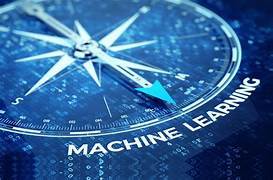Machine Learning: Enhancing Profitability in Digital Advertising
Digital advertising has evolved dramatically over the years, and the rise of machine learning (ML) has been a critical driver of this transformation. By analyzing massive datasets, identifying patterns, and automating decision-making processes, ML has revolutionized the way businesses target audiences, optimize campaigns, and maximize profitability. This article explores the role of machine learning in digital advertising, highlighting its benefits, applications, challenges, and the future of advertising in an AI-driven world.
The Role of Machine Learning in Digital Advertising
Machine learning involves algorithms that improve over time through experience, making it particularly well-suited for digital advertising. By leveraging vast amounts of data, ML helps marketers create personalized and dynamic advertising strategies that cater to individual consumer preferences.
Key Capabilities of ML in Advertising:
- Data Analysis: ML processes extensive datasets to uncover actionable insights, enabling marketers to make data-driven decisions.
- Automation: It automates repetitive tasks such as bid adjustments, audience segmentation, and ad placements, reducing human intervention.
- Prediction and Optimization: ML models predict future trends and optimize campaigns for better performance and higher ROI.
Applications of Machine Learning in Digital Advertising
1. Personalized Advertising
Machine learning enables hyper-personalization by analyzing user behavior, preferences, and purchasing patterns. Algorithms deliver tailored ads to individuals, increasing the likelihood of engagement and conversion.
- Example: E-commerce platforms use ML to recommend products based on a user’s browsing history, purchase behavior, and demographic data. These personalized ads result in higher click-through rates (CTR) and sales.
2. Programmatic Advertising
Programmatic advertising leverages ML to automate the buying and selling of ad inventory in real time. This ensures that ads reach the right audience at the right time and at the optimal cost.
- How It Works: Real-time bidding (RTB) platforms use ML to analyze user data and select the best ad placements. This process happens within milliseconds, maximizing efficiency and profitability.
3. Audience Segmentation
Traditional audience segmentation relies on demographic and geographic data. ML enhances this by incorporating behavioral and psychographic insights, creating highly refined audience profiles.
- Benefit: Marketers can target niche segments with tailored messages, resulting in better campaign performance.
4. Dynamic Creative Optimization (DCO)
DCO uses ML to create and deliver personalized ad creatives in real time. By analyzing user interactions and preferences, ML ensures that ads are contextually relevant and engaging.
- Example: A travel agency might use DCO to display different ads for flights, hotels, or car rentals based on a user’s recent searches.
5. Predictive Analytics
Predictive analytics powered by ML helps advertisers anticipate future consumer behavior. This enables proactive decision-making and campaign adjustments to meet emerging trends.
- Example: Predicting which products will be in high demand during a specific season and adjusting ad budgets accordingly.
6. Fraud Detection
Ad fraud, such as click fraud and impression fraud, is a significant challenge in digital advertising. ML algorithms detect and mitigate fraudulent activities by identifying abnormal patterns and suspicious behaviors.
- Impact: Protects ad budgets and ensures that marketing dollars are spent effectively.
Enhancing Profitability Through Machine Learning
1. Improved ROI
By optimizing ad placements, targeting, and creatives, ML ensures that advertising budgets are used efficiently, leading to higher returns on investment. Personalized and contextually relevant ads also reduce wastage and improve conversion rates.
2. Cost Reduction
Automation of repetitive tasks such as bidding and audience segmentation reduces operational costs. Additionally, ML identifies underperforming campaigns early, enabling swift corrective actions.
3. Real-Time Insights
ML provides real-time performance insights, allowing marketers to adjust strategies dynamically. This agility is crucial in responding to market shifts and consumer behavior changes.
4. Enhanced Customer Experience
Personalized advertising enhances the overall customer experience by delivering relevant and engaging content. Satisfied customers are more likely to become loyal, further driving profitability.
Challenges of Implementing Machine Learning in Advertising
1. Data Privacy and Compliance
The use of personal data for advertising raises concerns about privacy and compliance with regulations such as GDPR and CCPA. Companies must ensure transparency and obtain user consent for data collection.
2. Algorithm Bias
ML models can inherit biases from training data, leading to unfair or discriminatory outcomes. Addressing algorithm bias is critical to maintaining ethical advertising practices.
3. Complexity and Cost
Implementing ML solutions requires significant investment in technology, infrastructure, and expertise. Small and medium-sized enterprises may find these costs prohibitive.
4. Integration with Existing Systems
Integrating ML tools with legacy advertising platforms can be challenging, requiring careful planning and execution.
Future Trends in Machine Learning for Digital Advertising
1. Voice and Visual Search Integration
With the growing popularity of voice assistants and visual search technologies, ML will play a key role in optimizing ads for these new interfaces.
2. Explainable AI (XAI)
As advertisers demand greater transparency, explainable AI will make ML models more interpretable, allowing marketers to understand how decisions are made.
3. AI-Powered Chatbots
Chatbots powered by ML will become more sophisticated, enabling personalized interactions with users and facilitating seamless product recommendations.
4. Integration with Augmented Reality (AR) and Virtual Reality (VR)
ML will enhance AR and VR advertising experiences by delivering interactive and personalized ads in immersive environments.
5. Focus on Sustainability
As sustainability becomes a priority, ML will help optimize ad delivery to reduce energy consumption and environmental impact.
Conclusion
Machine learning has revolutionized digital advertising by enabling precise targeting, automation, and real-time optimization. Its applications, from personalized ads to fraud detection, have significantly enhanced profitability for businesses. While challenges such as data privacy and algorithm bias persist, advancements in technology and ethical practices promise a future where ML-driven advertising continues to thrive.
As the digital landscape evolves, businesses that embrace machine learning will gain a competitive edge, delivering more effective campaigns and maximizing returns. In this era of data-driven marketing, machine learning is not just an option but a necessity for achieving sustained success in the ever-competitive world of digital advertising.


